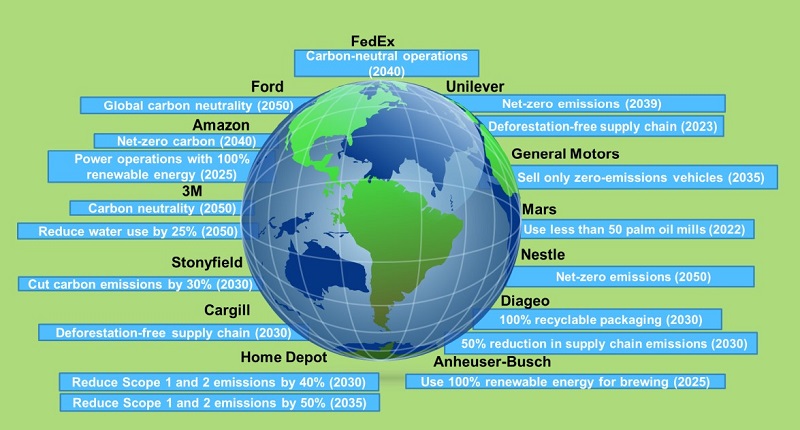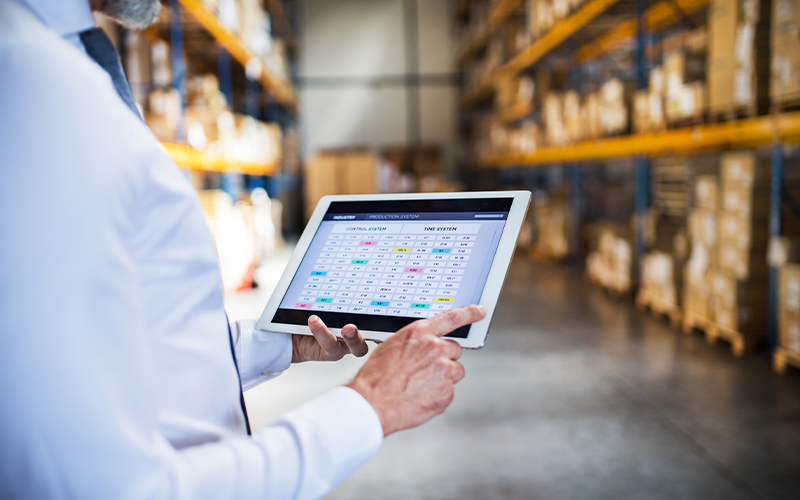Sourcing and Procurement
Can procurement save our Planet?
Reducing our impact on the environment begins with measuring what effect we have on it.
With climate change and global warming becoming a hot topic of discussion, the level of consciousness around the deteriorating state of the environment, as an impact of human activities, has grown amongst consumers. This has further made it difficult for organizations to ignore the implementation of sustainability programs into business strategies. As a result, the world’s largest and influential organizations have already set long-term sustainability targets for themselves.

While sceptics may debate if global warming is scientifically proven or not, the impact that humankind has had on the planet cannot be denied. Pollution of air, water and soil, de-forestation, and devastation of the natural environment, is evidence that speaks of irresponsible exploitation of natural resources.
Role of procurement in building sustainability
Words such as “Sustainable procurement”, “Green procurement”, “Eco procurement”, “Responsible sourcing”, have gained more popularity now than ever before. Are they just buzz words? The truth is that every purchasing decision made, has an impact on the environment, economy, and society, starting from energy being used to charge our electronic devices to the conditions of workers in textile factories. Therefore, procurement is uniquely positioned to address sustainability concerns like carbon emission, green gasses, plastic usage, deforestation, and others, as it has huge buying power. Procurement is responsible to decide what to buy and from whom to buy, thereby gaining the power to promote environmentally friendly practices.
The importance of the role of procurement in the value chain was recognized by International Organization for Standardization in 2017 when it published separate guidelines for procurement. ISO 20400:2017 Sustainable procurement - Guidance is intended for stakeholders involved in, or impacted by procurement decisions and processes, and provides guidance to organizations on integrating sustainability within procurement, as described in ISO 26000. Sustainable procurement involves the sustainability aspects related to the goods or services and to the suppliers along the supply chain that has a positive environmental, social, and economic impact over the entire life cycle. Sustainable procurement helps organizations achieve their sustainability goals and to function sustainably in general.
Theory versus reality
It’s said that procurement has a far-reaching influence on the value chain. But, is it just a theory? How can it be ensured that all the policies are not only residing on paper but being implemented in reality? What will happen if key suppliers are not meeting the set sustainability criterion? Below are a few points that procurement should look at, to answer the above questions:
Internal office procedures:
Sustainable procurement starts with e-procurement and works to change the way how procurement departments operate. While the adoption of ERP systems and the shift to a paperless office are significant steps forward, these changes must also be reflected in individual behaviors across the organization. Often, despite the excellent progress made in implementing paperless systems, local entities still rely on traditional methods—printing purchase orders or invoices and storing them in binders. At times, while clients do great work in implementing paperless offices, the local entities’ purchase orders or invoices are still being printed and stored in binders, in line with the traditional methods. Thus, it is important to work on changing the mindset of individuals when implementing environment-friendly processes/tools.Procurement process:
Procurement should buy environment-friendly goods and services from environmentally responsible suppliers. At the basic level, this can be achieved by seeking products that are sustainably manufactured with minimized packaging, using logistic companies that use biodiesel, seeking manufacturing facilities that have environmental certifications, including levels of emissions in the procurement contracts. However, procurement should not stop here, and instead, challenge the existing business models and work on bringing innovations that would make businesses more environmentally responsible. Procurement can look beyond sourcing recyclable materials and leverage its supplier ecosystem to drive innovation and resource efficiency.
Measuring sustainability in procurement
The key to a successful sustainable procurement program is transparency. The first step is to set sustainability goals that are to be measured. Although data can bring visibility into risk and opportunity assessment, measuring should not be treated as a goal in itself. The key is to first understand what is more relevant to look at, basis the industry. The second thing is to understand the organization’s capacity to do something with the obtained data. It is important to understand if the organization has the capacity to deal with the information about carbon dioxides, greenhouse gases obtained from data insights? In other words, the metrics selected should be actionable. Two types of metrics can be implemented to track sustainable procurement efforts:
- Internal measurements about your activity in procurement
- External measurements about your value chain partners
The next step would be to think over which suppliers should be targeted – the good practice would be to focus on a limited number of suppliers at the beginning, about 50, instead of the whole supplier database. Also, segmentation of suppliers might be needed and different evaluation criteria are applied to small companies versus the large ones.
Green procurement plays a critical role in achieving overall organizational sustainability goals. Amidst this, the critical question is, what is the legacy that an organization wants to leave behind. This is the question that would change the optics and what goals organizations set for themselves. At the end of the day, it is not money that matters, but what has been done to make this world a better place to live.






